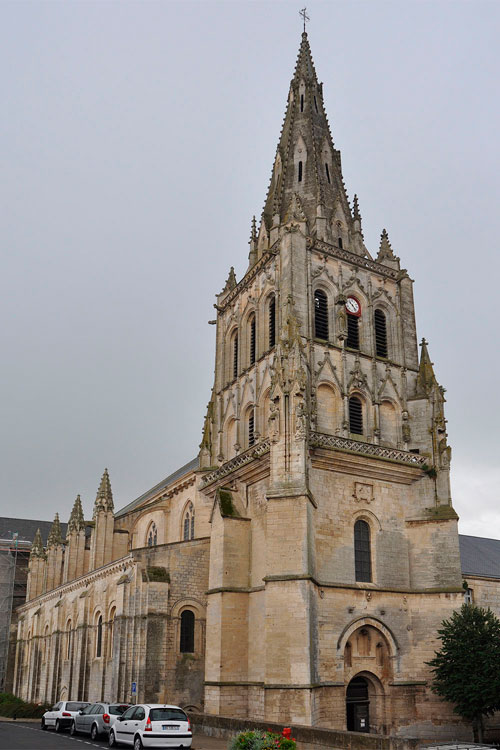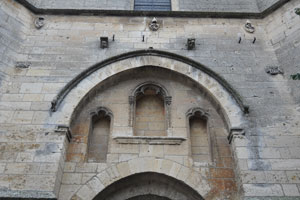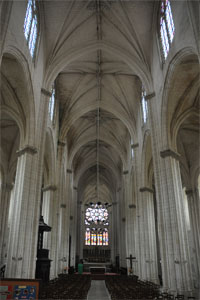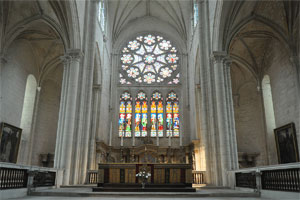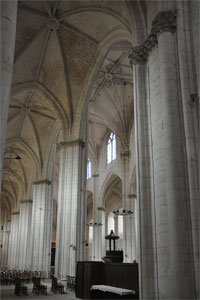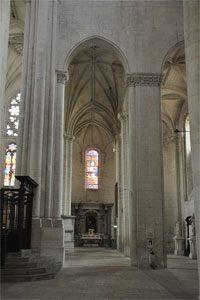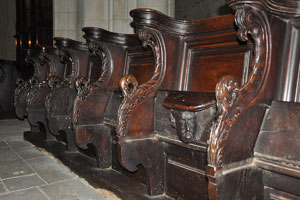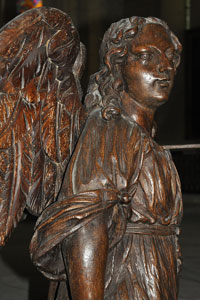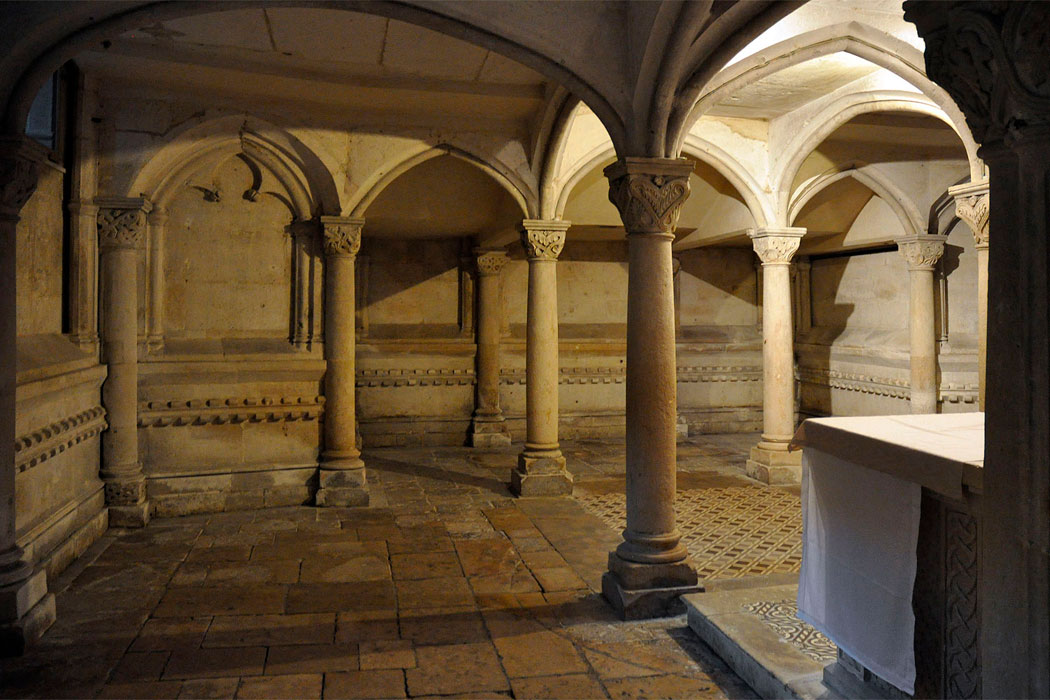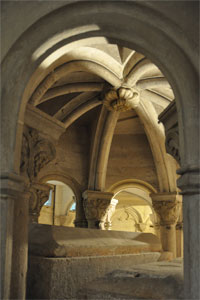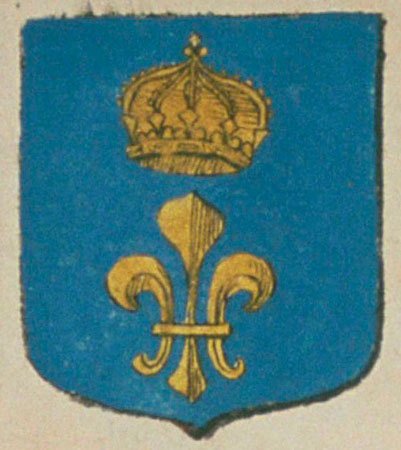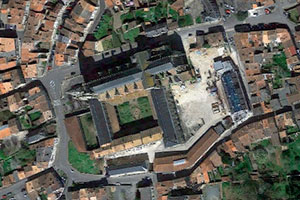The origins of the Abbey of Saint-Maixent are very ancient and traditionally associated with Saints Agapitus and Maixent of Agde (or Maxentius, †515), to whom Saint Leodegar, or Léger of Autun (616–678), would later be added. According to tradition, it was Agapitus who founded the first oratory here in the 5th century, dedicating it to Saint Saturninus. A monastic community gradually formed around it. Maxentius later joined the community and, after the founder’s death, succeeded him as abbot.
It is believed that during this early period, Saint-Saturnin received the visit and protection of the Frankish king Clovis I (c. 466–511). Upon Maxentius’s death, the monastery changed its name to adopt his patronage, replacing that of Saint-Saturnin. The possession of Saint Maixent’s relics attracted pilgrims and increased the monastery’s wealth. Its reputation grew further with the transfer of the relics of Saint Leodegar, bishop of Autun and former abbot of the monastery, which arrived in 681 and were placed in the church of Saint-Léger, consecrated in 684.
At the beginning of the 9th century, thanks to royal protection —especially under Louis the Pious and Pepin II of Aquitaine— the monastery became one of the most influential religious centres in the region. In the mid-century, however, the monastery was affected by the Norman invasions. The community fled, taking their precious relics to Plélan (Saint-Sauveur de Plélan, Ille-et-Vilaine, Brittany), where they joined the also displaced monks of Saint-Sauveur de Redon. Once peace returned, the monks brought the relics back (in 924) and began reconstruction, aided by ongoing donations throughout the following centuries.
During the 11th century, work was carried out on the monastery’s various buildings. A fire in 1082 led to further reconstruction. The monastery’s peak prosperity came in the 12th century, followed by a decline due to political instability and loss of influence. It was affected by war —first the Hundred Years’ War, then the Wars of Religion— and fell under the control of commendatory abbots from 1499 onward. In 1568, the church was destroyed, and monastic life came to a near halt, only recovering in 1633 when the monastery joined the Congregation of Saint-Maur, which began its restoration.
In 1670, work began on the present church, reusing remains of the Romanesque structure. It was consecrated in 1682. The Maurist monks also founded a college of theology and philosophy. The monastic community was finally dissolved in 1791 during the Revolution. In 1803, the church reopened as a parish church, and restoration work continued throughout the 19th century. Meanwhile, the monastic buildings were converted into military facilities, now transferred to the municipality.
The church still serves religious functions. Its western entrance opens through a narthex with a gallery and upper tower; the structure is essentially Romanesque in plan, but later modifications give it a Gothic appearance. The interior has three naves with five bays, of Romanesque layout, and a transept. Externally, the chevet ends in five apses: the central one is rectangular both outside and inside, while the four lateral apses are rectangular on the outside but semicircular inside. This part of the building has undergone significant transformations, including changes to the crypt.
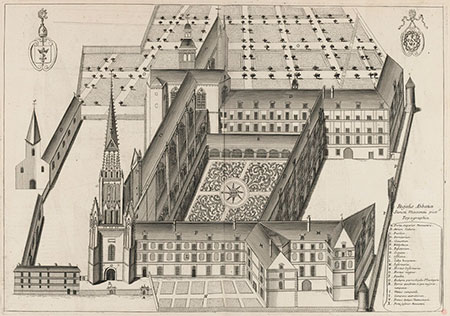
Monasticon Gallicanum
Bibliothèque nationale de France
- ANÒNIM (1966). La vie de Saint Maixent, abbé, patron de la ville qui porte son nom. Saint-Maixent: Reversé
- ARNAULD, Charles (1850). Histoire de Saint-Maixent. Mémoires de la Société de statistique du département des Deux-Sèvres. Vol. XIII
- BEAUNIER, Dom (1910). Abbayes et prieurés de l'ancienne France. Vol. 3: Auch, Bordeaux. Abbaye de Ligugé
- FOUCHIER, Jacques (1983). L'abbaye Saint-Maixent et son destin. Niort: Terroir
- LABANDE-MAIFERT, Yvonne (1957). Poitou roman. La nuit des temps, 5. Zodiaque
- LÉVESQUE, Louis (1897). Anciennes églises de Saint-Maixent : paroisses, abbayes, couvents et monastères. Saint-Maixent: Reversé
- MARCHEGAY, Paul; i altres; ed. (1869). Chronique de Saint-Maixent. Chroniques des églises d'Anjou. París: Renouard
- OBERSON, Isabelle; i altres (2004). Saint-Maixent, église abbatiale. Congrès archéologique de France, 159e session, 2001, Deux-Sèvres. Société française d’archéologie
- PEIGNÉ-DELACOURT, Achille (1877). Monasticon Gallicanum. Paris: G. Chamerot
- RAVAN, Hilaire (1864). Essai historique sur l'abbaye de Saint-Maixent et sur ses abbés depuis l'année 459 jusqu'en 1791. Niort: Clouzot
- RICHARD, Alfred (1876). Rapport sur la découverte d’une crypte dans l'église Saint-Léger de Saint-Maixent. Bulletin monumental. Vol. 42
- RICHARD, Alfred (1886). Chartes et documents pour servir a l’histoire de l’abbaye de Saint-Maixent. Archives Historiques du Poitou. Vol. XVI-XVIII. Poitiers
- ROBREAU, Bernard (2017). Les vies de saint Maixent : hagiographie et mythologie. Cahiers électroniques d’anthropologie religieuse et d’histoire
- SAINT-MAUR, Congregació de (1720). Gallia Christiana in provincias ecclesiasticas distributa. Vol. 2. París: Typographia Regia
